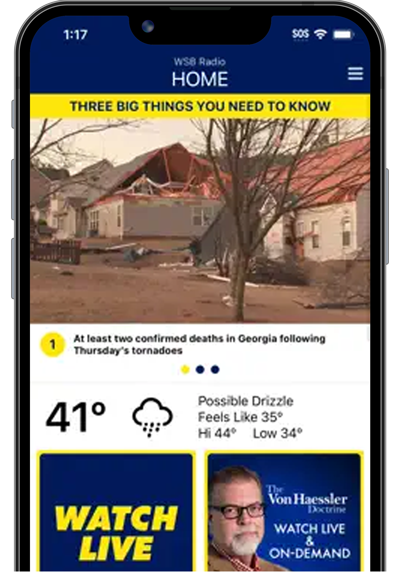Widespread flooding brought parts of South Florida to a standstill Wednesday. The National Weather Service issued a flash flood emergency in Broward & Miami-Dade Counties through 8 p.m. ET, saying "life-threatening" and "catastrophic" flooding was possible from heavy downpours that began Tuesday.
Yahoo News spoke with Gerry Dworkin, a consultant for aquatic safety and water rescue for Lifesaving Resources, a school that provides emergency training in water safety and rescue, and Stephanie Fox, national spokesperson for the American Red Cross, about what people should know and do in the event of a flash flood. Responses have been lightly edited for length and clarity.
What do the different flood advisories mean?
Fox: It's really important for folks to know the differences between a watch, an advisory and a warning, because each is going to trigger different types of actions.
A watch traditionally means that the weather is incoming but not immediately. It's important to just be prepared and be aware of what kind of weather hazard is forthcoming.
An advisory means it's probably going to occur but maybe not to the severity of a flood warning, but there's probably going to be some sort of nuisance flooding.
A warning means that the weather is imminent or it's already happening, and you need to make sure that you are taking action in that moment and knowing what your action is long before that warning is actually issued.
What are some ways people can plan ahead of a flood?
Fox: You want to know what your risk area is. Do you live in an area that would typically see a high amount of water coming in, or is there maybe poor drainage in your area?
You want to stay in touch with local officials and your office of emergency management to see if any kind of evacuation order is going to be issued before this weather comes in. Certain areas that are predisposed to flooding will issue evacuation orders before that hazard arrives, knowing that once it does get there, it’s more of a rescue operation.
You’ll want to make a plan and identify multiple ways out of your community as well as have an emergency kit, which should be able to sustain you if you are stuck in your home and not be able to go anywhere for at least two weeks.
Then you’ll want to have a kit that can sustain you for three days if you evacuate to a shelter, with things like food, water and creature comforts.
What are some things people should know once flooding has started?
Fox: Refer back to the plan of multiple ways out of your community, so if you do have one route that is blocked, you have other options and ways to get out.
Stay in lockstep with your office of emergency management and your local meteorologist as they talk through the current hazards and what to expect in the next several hours or days, as we kind of see flooding come and go.
And then ensure that you’re leaving when you feel most comfortable doing so. You don’t necessarily have to wait until an evacuation order is issued if you know you may be at risk in your community and you would feel more comfortable going to higher ground.
What should people know about flooded roadways?
Dworkin: First and foremost, we advocate to turn around, don't drown and don't attempt to drive around barriers.
If you see flooded roads, you have no idea what the integrity of the road is below the surface of the water, nor do you have any idea how fast the water is moving. It only takes 6 inches of water to take a person off their feet if they’re standing in the water, and it only takes a foot of water to float a vehicle off its wheels, and then the person has no control.
What should you do if you get swept away by floodwaters in your car?
Dworkin: If you end up in water and you need to get out of your vehicle, don't grab your phone. Don't waste any time trying to call 911, but rather what we advocate is to disengage your seat belt; open your window, because you may not be able to open your door due to the water pressure; disengage your seat belt; open your window; get children out; and get out of the vehicle as quickly as you can. The vehicle is only going to float for 30 seconds to several minutes, depending on the integrity of the vehicle seals [before the vehicle becomes submerged in water].

:quality(70)/cloudfront-us-east-1.images.arcpublishing.com/cmg/SCAJHA3GFQCLZPUHJI6WUFHYHM.jpg)
:quality(70)/cloudfront-us-east-1.images.arcpublishing.com/cmg/B7IHPA5LQRDZNKIOHMGEM7UKV4.jpg)
:quality(70)/cloudfront-us-east-1.images.arcpublishing.com/cmg/IBFVZCDVUJBHDBBEEP2WW5WOYQ.jpg)
:quality(70)/cloudfront-us-east-1.images.arcpublishing.com/cmg/MCXPGIR3IFE4LOFJLTUQCVCDZY.jpg)



